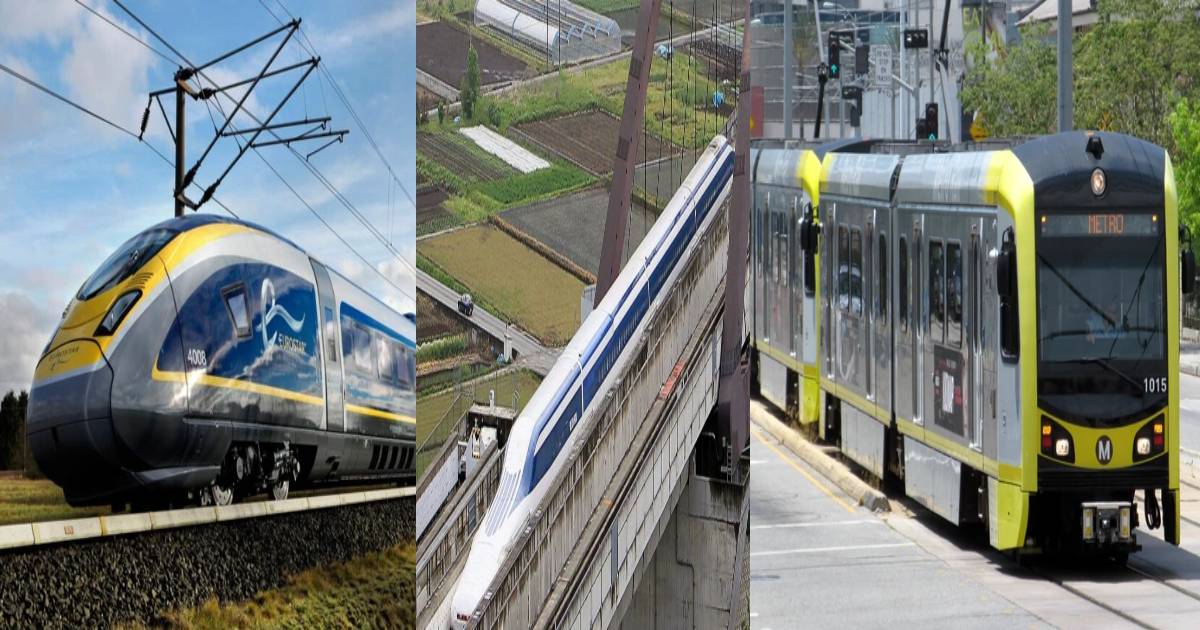Passengers and cargo can be transported on trains, which are made up of a number of interconnected vehicles that operate along a railway track. Trains have long been a vital and enthralling mode of transportation.
It is proof of humanity’s progress to see the bright red steam locomotives or the sleek bullet trains. Thanks to technological advances that have revolutionized the rail industry. Listed below are a few different types of trains.
1. High-Speed Trains
To be considered a high-speed train, a train must have the ability to reach an average of 125 miles per hour or more. Trains of this type are intended to compete with planes in terms of overall travel time by linking large urban areas. This type of train is used in France and Japan, among other countries.
2. Light Rail Trains
As the name suggests, light trains relate to trains that are used for local transportation in a city’s center and can travel on the road. Low-cost, pedestrian-friendly light rail has a smaller passenger capacity than high-speed transit.
Fast public transportation or local bus service is possible depending on the available infrastructure, which gives it an advantage. As of Portland’s implementation, it’s in use.
3. Freight Train
Goods trains are another name for freight trains, which transport materials or cargo. They aren’t designed to carry passengers at all. It is important to the industry that these trains deliver the vast bulk of the world’s freight.
Shipping goods by train has the potential to be a very cost-effective option in some situations. As a result, they are a more environmentally friendly means of transportation than automobile travel. In comparison to trucks, they can transport more weight over longer distances, although their primary purpose is long-distance transportation. Freight trains are used in the United States.
4. Monorail
The monorail is a single-beam or single-track train system. They are built to handle medium-sized traffic, which is why they are commonly found on raised rail tracks. It is powered by linear induction motors, which move it along a straight path.
5. Railcar
Self-propelled train cars are used to transport passengers to and from their destinations. Railcars are single cars, coaches, or carriages that have a driver’s cabin at both ends. These automobiles, which can also transport trains, are known as “railmotor coaches” or “transport vehicles” in the rail industry’s terminology.
6. Light Rail
The term “light rails” is widely used to describe modern tram systems. Even so, they typically have their own distinct routes, like heavy-line railroads. As a hybrid of the tram and the train, they’re the best of both worlds. In contrast to subway trains, light railways may feature bridges that are often protected by crossing gates. Light railways built on the tracks of decommissioned heavy trains are widely used to link rural areas and low-income neighborhoods to urban centers.
7. Maglev
“Magnetic levitation” is the origin of the name “maglev.” In this type of train, two pairs of magnets push the train off the track with this mode of transportation. To compensate for the lack of friction, a second magnet is used to move the floating train forward. In spite of the fact that they don’t travel far, they offer greater rail and airline passes for their money. There are no moving parts in Maglev trains. Only the train itself is capable of motion.
It uses magnets to control its speed and stability as it goes along a predetermined path. As a result, they run more smoothly and quietly in comparison to traditional heavy-duty trains.

